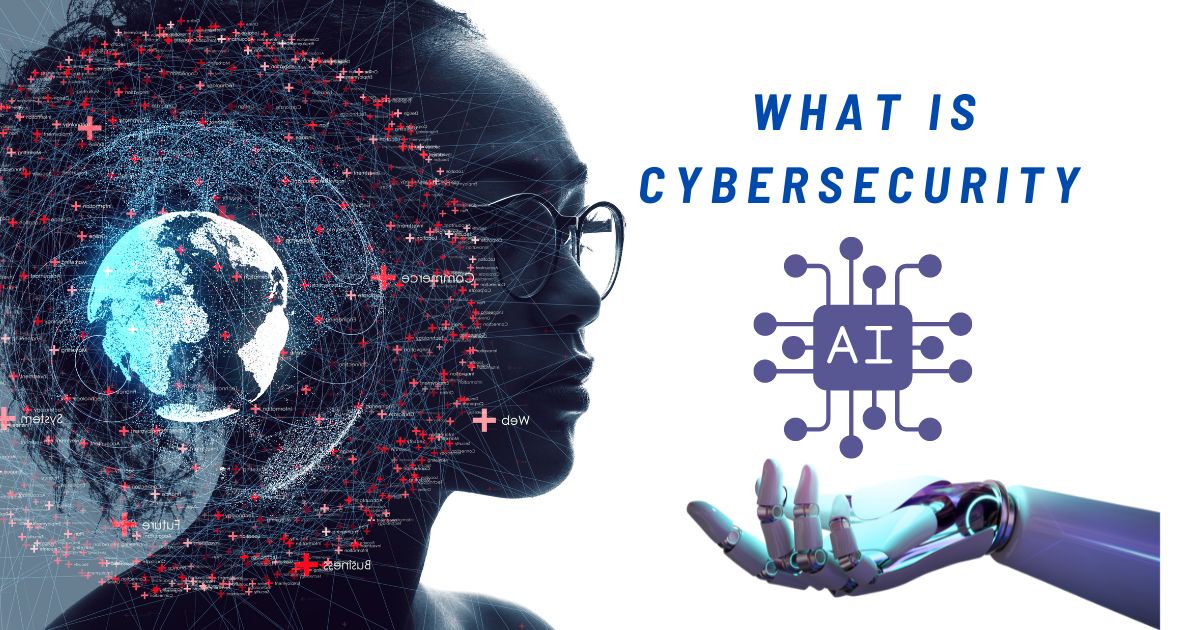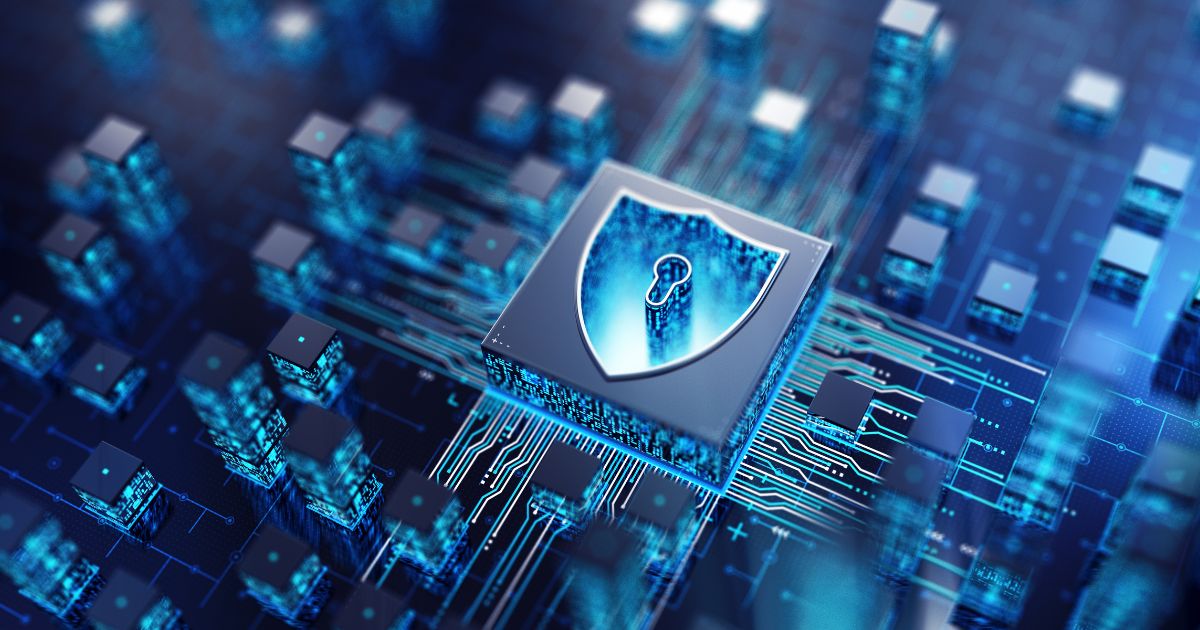
Introduction
In the ever-evolving landscape of era, the mixing of Artificial Intelligence (AI) in cybersecurity has end up a sport changer. As cyber threats grow extra sophisticated and common, conventional security features regularly fall quick.
AI complements the capacity to stumble on, prevent, and reply to these threats in actual time. By leveraging algorithms and gadget learning, corporations can analyze good sized quantities of records quickly and as it should be, taking into consideration proactive security measures.

This article delves into the diverse aspects of AI in cybersecurity, discussing its importance, blessings, dangers, required abilties, and future outlook, providing a comprehensive expertise of ways AI is shaping the sphere.
Key Takeaways
- AI Enhances Threat Detection: The potential to research and identify threats in real time units AI aside from traditional strategies.
- Predictive Analytics: AI’s potential to foresee potential threats facilitates companies stay beforehand of cybercriminals.
- Automation Reduces Workload: By automating recurring obligations, AI frees up cybersecurity specialists to awareness on greater strategic initiatives.
- Human Expertise Remains Vital: Despite the enhancements in AI, human oversight is important for deciphering complicated records and making knowledgeable selections.
What is AI in Cybersecurity?
AI in cybersecurity refers back to the software of tool mastering algorithms and statistics evaluation techniques to pick out out and combat cyber threats.
These AI systems are designed to analyze from historical statistics, recognizing patterns and anomalies that may represent malicious sports.

Unlike conventional cybersecurity gear, which rely on static tips, AI can adapt and evolve as new threats emerge.By studying person behavior, network site visitors, and machine logs, AI enhances the detection of unusual activities, permitting groups to respond swiftly to potential breaches.
This functionality is crucial in a landscape where cyber threats aren’t simplest increasing in range but additionally in complexity.
Subheading: The Technology Behind AI
- Machine Learning: A subset of AI, gadget studying enables systems to examine from records and enhance their detection talents over the years. This means that as extra records is analyzed, the AI will become higher at identifying threats.
- Natural Language Processing: This era permits AI to investigate textual records from various resources, along with emails and logs, to stumble on phishing attempts or other textual content-based totally assaults.
Why Is AI in Cybersecurity Important?
The importance of AI in cybersecurity cannot be overstated. As cyber attacks develop in sophistication, conventional techniques frequently warfare to preserve tempo.
AI addresses this gap by means of imparting greater pace and accuracy in hazard detection. It can examine tremendous datasets at brilliant speeds, identifying styles that may match neglected by human analysts.
Additionally, AI can function 24/7, continuously tracking systems and networks for anomalies. This functionality permits corporations to reply to threats in actual time, reducing the window of possibility for cybercriminals.
Ultimately, AI empowers companies to adopt a proactive protection posture, significantly enhancing their defense mechanisms.
Subheading: Addressing Modern Threats
- Sophistication of Attacks: Modern cyber attacks frequently make use of advanced strategies that may avoid traditional security features. AI is essential for spotting those complicated threats.
- Speed of Response: AI systems can detect threats nearly instantly, permitting for fast motion, which is critical in mitigating capability damage from attacks.
Benefits of AI in Cybersecurity
The integration of AI in cybersecurity offers severa benefits that beautify ordinary security features. One massive benefit is stepped forward risk detection; AI can analyze person behavior and network traffic patterns to discover uncommon sports fast.

Additionally, AI-powered systems can automate responses to certain sorts of incidents, drastically reducing response times and minimizing damage.
Cost efficiency is every other advantage; by automating habitual tasks, groups can allocate sources more successfully, permitting cybersecurity teams to attention on complicated problems.
Furthermore, AI reduces the occurrence of fake positives, improving the accuracy of danger identification and improving operational efficiency.
| Benefit | Description |
|---|---|
| Enhanced Threat Detection | AI identifies anomalies more efficiently, allowing for quick action. |
| Automated Responses | Swift automation minimizes damage during incidents. |
| Cost Efficiency | Reduces manual workload and associated operational costs. |
What Are the Risks of AI in Cybersecurity?
While the blessings of AI in cybersecurity are significant, there are inherent risks that groups should don’t forget. One important subject is antagonistic assaults, where cybercriminals attempt to manipulate AI systems to evade detection or take advantage of vulnerabilities.
Additionally, biases in algorithms can result in erroneous chance checks, ensuing in both neglected attacks or unwarranted alarms.
Over-reliance on AI can also lead to complacency amongst human analysts, potentially creating gaps in security awareness.
Lastly, AI structures require considerable quantities of statistics for schooling, raising issues approximately data privacy and compliance with policies.
Balancing those dangers with the benefits of AI is critical for powerful cybersecurity techniques.
Skills Required to Implement AI in Cybersecurity
Implementing AI in cybersecurity necessitates a numerous skill set. First and predominant, understanding in records technology is crucial; experts have to recognize information modeling, evaluation techniques, and statistical methods.
Proficiency in device studying is likewise crucial, as cybersecurity groups need to design and implement algorithms which can adapt to new threats.
Furthermore, a strong basis in cybersecurity principles is essential, allowing teams to contextualize AI findings within the broader protection landscape.
Essential technical competencies encompass programming in languages like Python or R, which are commonly used in AI improvement.
Finally, essential questioning competencies are necessary for deciphering AI outputs and making informed selections concerning risk responses.
Subheading: Essential Technical Skills
- Programming Languages: Familiarity with languages consisting of Python, R, and Java is important for growing AI programs in cybersecurity.
- Cybersecurity Knowledge: Understanding middle cybersecurity standards, along with risk management and incident reaction, is critical for powerful AI implementation.
AI to Accelerate Your Security Defenses
AI serves as a powerful device to enhance and accelerate security defenses. By leveraging device getting to know algorithms, organizations can benefit actual-time insights into their safety posture, figuring out capacity vulnerabilities and threats proactively.
AI’s capability to research massive datasets allows it to spot anomalies and suspicious behavior styles that could indicate a breach.
Moreover, AI can automate many security methods, from risk detection to incident reaction, allowing protection groups to focus on higher-stage strategic tasks.
This now not best improves the performance of safety operations however additionally strengthens standard resilience towards cyber threats, growing a sturdy protection mechanism.
Subheading: Real-Time Insights
AI affords companies with immediate remarks on potential threats, taking into account speedy action.
Continuous tracking and evaluation help make sure that safety features are continually updated and powerful in opposition to rising threats.
Solutions
AI-driven cybersecurity solutions embody more than a few technologies designed to decorate chance detection and reaction skills.
Intrusion Detection Systems (IDS) utilize gadget mastering algorithms to discover suspicious activities by using studying styles and behaviors within network site visitors.
Behavioral Analytics Tools display user actions to set up baselines and locate anomalies indicative of insider threats or compromised bills.
These solutions enable corporations to put in force layered protection strategies that leverage AI for greater effective protection.
Additionally, Automated Incident Response Tools can offer fast responses to detected threats, drastically minimizing the ability effect of cyber incidents.
Subheading: The Role of Automation
Automation in cybersecurity allows streamline procedures, allowing for quick responses to threats without requiring consistent human intervention.
This is specially valuable in environments wherein velocity is crucial to mitigate capability harm.
Latest Product Demos
The today’s AI-driven cybersecurity products showcase present day talents that beautify protection operations.
Many of those merchandise characteristic actual-time hazard detection, allowing corporations to perceive and respond to threats nearly instantaneously.
Comprehensive analytics dashboards provide specified insights into safety activities, allowing teams to monitor developments and assess vulnerabilities.
Additionally, integration capabilities with existing protection infrastructure make certain seamless operation throughout various systems.
These product demonstrations spotlight the sensible programs of AI in improving cybersecurity measures, showcasing their effectiveness in real-international eventualities and supporting groups make knowledgeable selections approximately their safety investments.
How Does AI Improve Managed Detection and Response (MDR)?
AI significantly enhances Managed Detection and Response (MDR) offerings by using presenting continuous tracking and superior evaluation of safety incidents.
By studying ancient assault patterns and user conduct, AI improves the accuracy and pace of hazard detection, permitting MDR teams to reply to incidents more successfully.
This results in reduced live time, which means threats are diagnosed and mitigated more quick. Additionally, AI can prioritize signals based on severity, ensuring that human analysts recognition on the maximum important threats first.
By integrating AI into MDR, groups can attain a extra proactive protection posture, enhancing their overall resilience in opposition to cyber threats.
Subheading: Reducing Dwell Time
AI-driven insights assist organizations lower the time threats remain undetected. This discount in live time is vital for minimizing ability damage and preventing in addition compromise.
The Future of AI in Cybersecurity
The destiny of AI in cybersecurity is promising, with ongoing improvements probable to revolutionize how groups technique security.
Emerging technologies which includes deep gaining knowledge of and superior predictive analytics are predicted to beautify hazard detection abilities in addition.
As cyber threats retain to adapt, AI will play a important function in developing proactive defense mechanisms that could adapt to new challenges.
Organizations are probable to invest more in AI-driven answers, leveraging their competencies to automate responses, improve hazard intelligence, and beautify ordinary protection operations.
The persevered integration of AI into cybersecurity may be crucial in constructing resilient infrastructures that may withstand increasingly more sophisticated assaults.
Subheading: Emerging Trends
Emerging trends in AI for cybersecurity include the upward thrust of automated danger searching, AI-stronger identity control solutions, and superior behavioral analytics tools. These improvements will form the destiny of cybersecurity, offering corporations with more effective defenses.
FAQs
Can AI absolutely update human cybersecurity analysts?
While AI can automate many obligations and beautify chance detection, human understanding stays critical for strategic oversight, complex evaluation, and choice-making in cybersecurity.
How can organizations implement AI in cybersecurity?
Organizations can begin by means of investing in schooling for his or her cybersecurity teams, piloting AI answers, and integrating AI equipment with their existing safety frameworks.
A phased approach allows for evaluation and adjustment alongside the manner.
Conclusion
AI is transforming the cybersecurity panorama by using supplying superior detection capabilities, automation, and predictive insights.
While demanding situations and risks exist, the benefits of integrating AI into safety frameworks are sizeable. Organizations that leverage AI effectively can decorate their defenses, respond extra hastily to incidents, and live in advance of evolving threats.
As the cybersecurity landscape continues to conform, AI will certainly play an vital role in shaping effective safety strategies, allowing businesses to shield their virtual property in an increasingly more complicated hazard environment.




